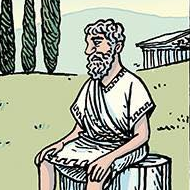Leaderboard
Popular Content
Showing content with the highest reputation on 07/15/2022 in all areas
-

Hidden or Silent Automation - (Moved)
JesimomJR and one other reacted to abberration for a topic
Hello, To achieve completely silent installs, you should use silent switches, as Musashi said. The silent switch for WinRAR is "/S" (I think this one needs to be capitalized). The code for your example should be: Run("C:\INSTALADORES\winrar-x64-611br.exe /S") My signature has a link to a project I created called Software Installer. Even if you do not use my program to install software, you can use it to help determine what the silent switch might be. Also, there is a program called Universal Silent Switch Finder that might also be useful.2 points -
The Running Object Table (ROT) is a system global table where objects can register themselves. This makes the objects accessible in processes other than the process where the object was created. IRunningObjectTable and related interfaces provides access to register and maintain objects in the ROT. ThreadsOther threads related to ROT objects: Non-blocking data display functions IPC Techniques through ROT Objects AutoIt and Perl integration through ROT objects Access AutoIt by trancexx is about executing AutoIt commands in other programming languages. The AutoIt command is executed by calling a Call method of the ROT object. The example is based on the AutoItObject UDF. Posts (2021-01-03)This is a list of the most interesting posts below: Usage section with typical examples of the use of ROT objects with the following subsections: Passing array between AutoIt programs Passing array between AutoIt and VBScript Passing data through ROT Objects Executing Object Methods through VBScript VBScript (2021-01-03)VBScript is used as a consistent programming language to demonstrate the ROT technique for communicating between AutoIt and other languages. This is a list of the VBScript posts: Passing array between AutoIt and VBScript (in middle of post) Executing Object Methods through VBScript BasicRegister an objectExamples\1) Basic\0) ROT_RegisterObject.au3 #include <Array.au3> #include "..\..\Includes\IRunningObjectTable.au3" Example() Func Example() Local $sNameId = "DataTransferObject" & ROT_CreateGUID() Local $iHandle = ROT_RegisterObject( Default, $sNameId ) ; Default => Object = Dictionary object If Not $iHandle Then Return ConsoleWrite( "ROT_RegisterObject ERR" & @CRLF ) ConsoleWrite( "ROT_RegisterObject OK" & @CRLF ) Local $aROT_List = ROT_Enumerate() _ArrayDisplay( $aROT_List, "ROT_RegisterObject" ) EndFunc Output in _ArrayDisplay looks like this: DataTransferObject-{05DCB964-FD4B-40EC-A95A-999491347D20} $sNameId (similar to ProgID) is the identification of the ROT object and is used in the ObjGet() function to access the object in this way: Local $oDataTransferObject = ObjGet( "DataTransferObject-{05DCB964-FD4B-40EC-A95A-999491347D20}" ) ROT_CreateGUID() is used to make $sNameId unique. See below. ROT_RegisterObject() is the function that registers the object in the ROT. The Dictionary object is the actual object that is registered in the ROT. The Add method allows you to add a new key/item pair to the object. The key is often a string. The item property can be any COM compatible data type which includes most AutoIt data types. An exception is the DllStruct type which must be converted to a compatible type. Because many different data types can be used in the item property and the item can be identified through a key, the Dictionary object is generally applicable for many different purposes. More information about registering objects in the ROT can be found in this Microsoft documentation. ROT_Enumerate() enumerate the objects, that are registered in the ROT. The program that registers an object in the ROT plays the role of server. One or more programs that access the ROT object with the ObjGet() function play the role of clients. The ROT object is only available as long as the server program is running or until the server program deletes the object with the ROT_Revoke() function. You can find examples of using the functions in Examples\1) Basic\. ROT objects (2020-07-11)The Dictionary object is the default object in the ROT_RegisterObject() function. The object that's passed to this function is the actual object that's registered in the ROT. The Dictionary object works fine when passing data between AutoIt scripts, between AutoIt and VBScript, and between AutoIt and Perl. However, situations may easily arise where it can be an advantage to pass data with a very simple object with just a single property. There are several options for creating such a simple object. This can be done through C# and VB.NET code, as demonstrated in Using C# and VB Code in AutoIt through .NET Framework. And it can be done through the AutoItObject UDF. Examples\4) ROT Objects\ contains examples for creating the ROT object in these three ways. Client.au3 is the same script in all examples: #include <Array.au3> Example() Func Example() Local $sNameId = "DataTransfer" Local $oDataTransfer = ObjGet( $sNameId ) Local $aArray = $oDataTransfer.Item _ArrayDisplay( $aArray ) EndFunc Create object with C# code CSharp\Server.au3: #include "..\..\..\Includes\IRunningObjectTable.au3" #include "..\DotNetAll.au3" Example() Func Example() Local $aArray[1000][10] For $i = 0 To 1000 - 1 For $j = 0 To 10 - 1 $aArray[$i][$j] = $i & "/" & $j Next Next Local $oNetCode = DotNet_LoadCScode( FileRead( "Object.cs" ), "System.dll" ) Local $oCSObject = DotNet_CreateObject( $oNetCode, "CSObjClass" ) $oCSObject.Item = $aArray Local $sNameId = "DataTransfer" ROT_RegisterObject( Ptr( $oCSObject ), $sNameId ) RunWait( @AutoItExe & " /AutoIt3ExecuteScript " & "Client.au3" ) EndFunc CSharp\Object.cs: using System; public class CSObjClass { public object Item { get; set; } } Create object with VB.NET code VB.NET\Server.au3: #include "..\..\..\Includes\IRunningObjectTable.au3" #include "..\DotNetAll.au3" Example() Func Example() Local $aArray[1000][10] For $i = 0 To 1000 - 1 For $j = 0 To 10 - 1 $aArray[$i][$j] = $i & "/" & $j Next Next Local $oNetCode = DotNet_LoadVBcode( FileRead( "Object.vb" ), "System.dll" ) Local $oVBObject = DotNet_CreateObject( $oNetCode, "VBObjClass" ) $oVBObject.Item = $aArray Local $sNameId = "DataTransfer" ROT_RegisterObject( Ptr( $oVBObject ), $sNameId ) RunWait( @AutoItExe & " /AutoIt3ExecuteScript " & "Client.au3" ) EndFunc VB.NET\Object.vb: Imports System Public Class VBObjClass Public Property Item As Object End Class In AutoIt/Perl integration, the very first attempts were performed with the VB.NET object. Check for recognition of the ROT object with this Client.pl script (copied from the AutoIt/Perl example) : use strict; use Win32::OLE; my $oObj = Win32::OLE->GetObject( "DataTransfer" ); Win32::OLE->EnumAllObjects( sub { my $Object = shift; my $Class = Win32::OLE->QueryObjectType( $Object ); printf "Object = %s, Class = %s\n", $Object, $Class; } ); Gave the following output: Object = Win32::OLE=HASH(0x72a51c), Class = _VBObjClass ; VB.NET object Object = Win32::OLE=HASH(0x71b5a8), Class = IDictionary ; Dictionary object Create object with AutoItObject AutoItObject\Server.au3: #include "..\..\..\Includes\IRunningObjectTable.au3" #include "AutoitObject.au3" Example() Func Example() Local $aArray[1000][10] For $i = 0 To 1000 - 1 For $j = 0 To 10 - 1 $aArray[$i][$j] = $i & "/" & $j Next Next _AutoItObject_StartUp() Local $oObject = NewObject(), $sNameId = "DataTransfer" ROT_RegisterObject( Ptr( $oObject ), $sNameId ) Local $oDataTransfer = ObjGet( $sNameId ) $oDataTransfer.Item = $aArray RunWait( @AutoItExe & " /AutoIt3ExecuteScript " & "Client.au3" ) _AutoItObject_Shutdown() EndFunc Func NewObject() Local $oClassObject = _AutoItObject_Class() $oClassObject.AddProperty( "Item" ) Return $oClassObject.Object EndFunc Unique objectsWhen using ROT objects in real code, there is a particular question that needs to be addressed. The question is how to make sure that $sNameId, which clients use to access the object with the ObjGet() function, actually identifies a unique object. Running a server program twice in succession can easily create two ROT objects with the same $sNameId. But how do you actually access the ROT object that was created first and the ROT object that was created last? The answer to the question is to make sure that $sNameId also becomes unique so that you can distinguish between the two objects. To that end, the ROT_CreateGUID() function is created (copy of _WinAPI_CreateGUID()). The function can ensure a unique $sNameId as shown in the example above. The problem and solution is demonstrated in Examples\1) Basic\2) Multiple ROT objects.au3. Time stampsUsing the NoteChangeTime() and GetTimeOfLastChange() methods of the IRunningObjectTable interface, you can set and get timestamps on a ROT object. But these timestamps do not seem particularly useful. Therefore, the methods are not implemented. The UDFThe IRunningObjectTable UDF, Includes\IRunningObjectTable.au3, is a very small UDF with less than 150 lines of code: #include-once ; --- Interface definitions --- Global Const $sIID_IRunningObjectTable = "{00000010-0000-0000-C000-000000000046}" Global Const $dtag_IRunningObjectTable = _ "Register hresult(dword;ptr;ptr;dword*);" & _ "Revoke hresult(dword);" & _ "IsRunning hresult(ptr);" & _ "GetObject hresult(ptr;ptr*);" & _ "NoteChangeTime hresult(dword;struct*);" & _ "GetTimeOfLastChange hresult(ptr;ptr*);" & _ "EnumRunning hresult(ptr*);" Global Const $ROTFLAGS_REGISTRATIONKEEPSALIVE = 0x1 Global Const $ROTFLAGS_ALLOWANYCLIENT = 0x2 Global Const $sIID_IEnumMoniker = "{00000102-0000-0000-C000-000000000046}" Global Const $dtag_IEnumMoniker = _ "Next hresult(ulong;ptr*;ulong*);" & _ "Skip hresult(ulong);" & _ "Reset hresult();" & _ "Clone hresult(ptr*);" Global Const $sIID_IPersist = "{0000010C-0000-0000-C000-000000000046}" Global Const $dtag_IPersist = _ "GetClassID hresult(ptr*);" Global Const $sIID_IPersistStream = "{00000109-0000-0000-C000-000000000046}" Global Const $dtag_IPersistStream = $dtag_IPersist & _ "IsDirty hresult();" & _ "Load hresult(ptr);" & _ "Save hresult(ptr;bool);" & _ "GetSizeMax hresult(uint*);" Global Const $sIID_IMoniker = "{0000000F-0000-0000-C000-000000000046}" Global Const $dtag_IMoniker = $dtag_IPersistStream & _ "BindToObject hresult();" & _ "BindToStorage hresult();" & _ "Reduce hresult();" & _ "ComposeWith hresult();" & _ "Enum hresult();" & _ "IsEqual hresult();" & _ "Hash hresult();" & _ "IsRunning hresult(ptr;ptr;ptr);" & _ "GetTimeOfLastChange hresult(ptr;ptr;ptr);" & _ "Inverse hresult();" & _ "CommonPrefixWith hresult();" & _ "RelativePathTo hresult();" & _ "GetDisplayName hresult(ptr;ptr;wstr*);" & _ "ParseDisplayName hresult();" & _ "IsSystemMoniker hresult(ptr*);" ; --- Windows API functions --- Func ROT_GetRunningObjectTable() Return DllCall( "Ole32.dll", "long", "GetRunningObjectTable", "dword", 0, "ptr*", 0 )[2] EndFunc Func ROT_CreateFileMoniker( $sNameId ) Return DllCall( "Ole32.dll", "long", "CreateFileMoniker", "wstr", $sNameId, "ptr*", 0 )[2] EndFunc Func ROT_CreateBindCtx() Return DllCall( "Ole32.dll", "long", "CreateBindCtx", "dword", 0, "ptr*", 0 )[2] EndFunc ; --- UDF functions --- ; Failure: Returns 0 ; Success: Returns $iHandle ; Registers an object and its identifying moniker in the ROT Func ROT_RegisterObject( $pObject, $sNameId, $iFlags = $ROTFLAGS_REGISTRATIONKEEPSALIVE ) If $pObject = Default Then Local $oDict = ObjCreate( "Scripting.Dictionary" ) $pObject = Ptr( $oDict ) EndIf If Not $pObject Or Not $sNameId Then Return 0 Local $oRunningObjectTable = ObjCreateInterface( ROT_GetRunningObjectTable(), $sIID_IRunningObjectTable, $dtag_IRunningObjectTable ) If Not IsObj( $oRunningObjectTable ) Then Return 0 Local $pMoniker = ROT_CreateFileMoniker( $sNameId ) If Not $pMoniker Then Return 0 Local $iHandle $oRunningObjectTable.Register( $iFlags, $pObject, $pMoniker, $iHandle ) Return $iHandle ? $iHandle : 0 EndFunc ; Returns unique GUID as string ; Copied from _WinAPI_CreateGUID Func ROT_CreateGUID() Local Static $tGUID = DllStructCreate( "struct;ulong Data1;ushort Data2;ushort Data3;byte Data4[8];endstruct" ) DllCall( "Ole32.dll", "long", "CoCreateGuid", "struct*", $tGUID ) Return "-" & DllCall( "Ole32.dll", "int", "StringFromGUID2", "struct*", $tGUID, "wstr", "", "int", 65536 )[2] EndFunc ; Failure: Returns 0 ; Success: Returns $aROT_List ; Enumerates objects and identifying monikers in the ROT Func ROT_Enumerate() Local $oRunningObjectTable = ObjCreateInterface( ROT_GetRunningObjectTable(), $sIID_IRunningObjectTable, $dtag_IRunningObjectTable ) If Not IsObj( $oRunningObjectTable ) Then Return 0 Local $pEnumMoniker $oRunningObjectTable.EnumRunning( $pEnumMoniker ) Local $oEnumMoniker = ObjCreateInterface( $pEnumMoniker, $sIID_IEnumMoniker, $dtag_IEnumMoniker ) If Not IsObj( $oEnumMoniker ) Then Return 0 Local $pMoniker, $oMoniker, $pBindCtx, $sMonikerName, $i = 0 Local $oDict = ObjCreate( "Scripting.Dictionary" ) While( $oEnumMoniker.Next( 1, $pMoniker, NULL ) = 0 ) $pBindCtx = ROT_CreateBindCtx() $oMoniker = ObjCreateInterface( $pMoniker, $sIID_IMoniker, $dtag_IMoniker ) $oMoniker.GetDisplayName( $pBindCtx, NULL, $sMonikerName ) $oDict.Add( "Key" & $i, $sMonikerName ) $i += 1 WEnd Local $aROT_List = $oDict.Items() Return $aROT_List EndFunc ; Failure: Returns 0 ; Success: Returns 1 ; Removes an object and its identifying moniker from the ROT Func ROT_Revoke( $iHandle ) If Not $iHandle Then Return 0 Local $oRunningObjectTable = ObjCreateInterface( ROT_GetRunningObjectTable(), $sIID_IRunningObjectTable, $dtag_IRunningObjectTable ) If Not IsObj( $oRunningObjectTable ) Then Return 0 Return Not $oRunningObjectTable.Revoke( $iHandle ) * 1 EndFunc 7z-fileThe 7z-file contains source code for the UDF and examples. You need AutoIt 3.3.12 or later. Tested on Windows 7 and Windows 10. Comments are welcome. Let me know if there are any issues. IRunningObjectTable.7z1 point
-

Changing pixel color _ image
ahmeddzcom reacted to Nine for a topic
Maybe you do not need the UDF after all. If the souce is a file then this should work : #include <GDIPlus.au3> _GDIPlus_Startup() Local $hImage = _GDIPlus_ImageLoadFromFile("Torus.jpg") Local $iWidth = _GDIPlus_ImageGetWidth($hImage), $iHeight = _GDIPlus_ImageGetHeight($hImage) Local $tLock = _GDIPlus_BitmapLockBits($hImage, 0, 0, $iWidth, $iHeight, BitOR($GDIP_ILMWRITE, $GDIP_ILMREAD), $GDIP_PXF32ARGB) Local $tPixel = DllStructCreate("int color[" & $iWidth * $iHeight & "];", $tLock.scan0) For $i = 1 To $iWidth * $iHeight If $tPixel.color(($i)) <> 0xFFFFFFFF Then $tPixel.color(($i)) = 0xFF000000 Next _GDIPlus_BitmapUnlockBits($hImage, $tPixel) _GDIPlus_ImageSaveToFile($hImage, "Test.jpg") _GDIPlus_ImageDispose($hImage) _GDIPlus_Shutdown()1 point -
Is your search broken on your computer? ... and please do not quote full posts constantly (and no translated text) ... Thanks1 point
-
Your question is unfortunately not easy to answer (which programs do you consider as necessary? ). Many programs offer a silent installation (Keywords : Quiet or Silent mode, /q , /s , -q, -s etc.). The desired settings are passed via command line parameters. The amount and complexity of these parameters depends on the respective software. Example : WinRAR (from : https://documentation.help/WinRAR/HELPHints.htm ) In general, this approach (if offered) is preferable compared to the automation of a Setup-GUI via Send commands. Sending ENTER commands only works, if the GUI offers simple pre-selected OK/YES/CONFIRM buttons. In more sophisticated Setups, checkboxes have to be set, options have to be selected, and possibly even user data have to be entered. Last but not least, some Setups may expect a reboot of the computer. As you can see, there are a variety of scenarios where the "Send ENTER approach" most likely cannot be implemented in a practical way. First of all I would make a list of the really important programs and check, which ones provide a SILENT option. Afterwards I would collect the syntax of the command line parameters for the respective programs.1 point
-
JesimomJR, Do NOT create a new topic - all we have done is move your thread to the correct section. But please remember this is not a 24/7 support forum - those who answer are only here because they like helping others and have some time to spare. You just have to wait until someone who knows something about your particular problem, and is willing to help, comes online. Be patient and someone will answer eventually. M231 point
-

OutlookEX UDF - Help & Support (IV)
Simpel reacted to seadoggie01 for a topic
I've done something like this before, and if I remember correctly, the sent email object is no longer valid after it has been sent. To solve it, I searched the sent email folder for the subject of the just sent email (I think I specified within the last minute as well) and copied that object instead. Edit: And now I see there's another page of replies1 point -
The sent mail is saved in folder "Sent items" ("Gesendete Objekte"). You could use the event driven approach described in example script _OL_Example_ItemAdd_Event.au3 The object returned by _OL_Wrapper_SendMail is no longer valid to access the moved sent mail item. That's what causes your problem. Another approach is to search the Sent Items folder for the sent mail.1 point








